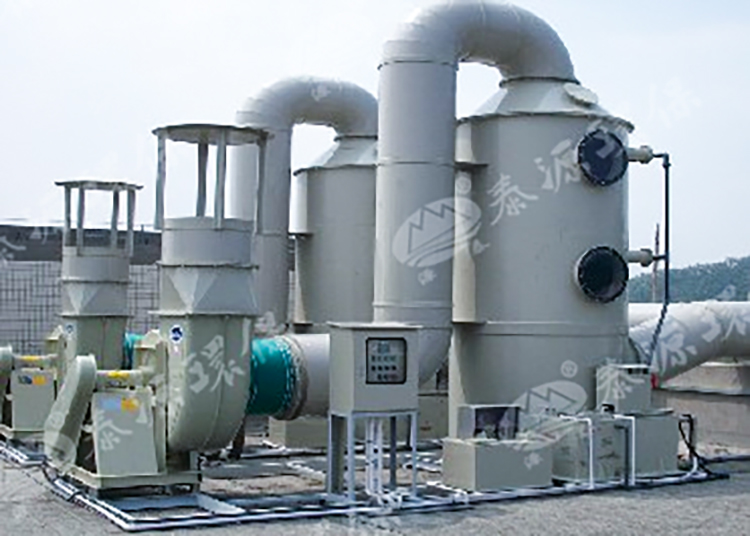Waste gas treatment system
Waste gas treatment system
Method and basic principle of waste gas treatment:
(1) dilution diffusion method
Principle: the smell of gas through the chimney to the atmosphere, or diluted with no odor, reducing the concentration of odor substances to reduce the smell. Scope of application: applicable to the treatment of low concentration of the odor of the odor of the organization. Advantages: low cost, simple equipment. Disadvantages: vulnerable to meteorological conditions, the stench still exists.
(2) water absorption method
Principle: the smell of certain substances soluble in the characteristics of the water, the odor components directly in contact with water, and dissolved in water to deodorization purpose. Scope of application: water soluble, there is the organization of the source of emissions of odor gases. Advantages: simple process, easy management, low cost of operation of the equipment to produce two pollution, the need to deal with the washing liquid. Disadvantages: low purification efficiency, should be used in combination with other technologies, the effect of the treatment of thiol, fatty acid, etc..
(3) aeration activated sludge process
Principle: the odor material is dispersed in the mixed solution of the activated sludge by aeration, and the application scope of the suspended growth of the microorganism is wide. Scope of application: as of 2013, Japan has been used for waste disposal field, sewage treatment plant odor treatment. Advantages: activated sludge after domestication, no more than the limit of the amount of odor components, the removal rate of up to 99.5%. Disadvantages: limited by the intensity of aeration, the application of this method has some limitations.
(4) multi medium catalytic oxidation process
Principle: solid filler special reaction tower packing, packing inside the compound multi medium catalyst. When the malodorous gases in the role of induced draft fan through packing layer, and through a special nozzle is divergent spray liquid phase compound oxidant on the surface of the solid packing full contact and under the catalysis of a multicomponent catalyst, malodorous gas pollution factor be fully decomposed. Scope of application: a wide range of application, especially suitable for the treatment of large amount of gas, high concentration of waste gas, the hydrophobicity of the material has a good removal rate. Advantages: small area, low investment, low operating cost; management convenient, that is, open and use. Disadvantages: impact load, not easy to change the concentration of pollutants and temperature changes, the need to consume a certain amount of the agent.
(5) low temperature plasma
Low temperature plasma is following: solid, liquid and gas of the fourth state of matter, when the applied voltage is reached, the gas ignition voltage, molecular gas breakdown, produces a mixture of electrons, ions, atoms and radicals, including. Although the electron temperature is very high, the temperature of heavy particle is very low, and the whole system is in a low temperature state, so it is called low temperature plasma. Low temperature plasma degradation of pollutants is to use these high-energy electrons, free radicals and other active particles and the exhaust gas pollutants, molecular contaminants within a very short period of time the decomposition of, and subsequent reaction to achieve the purpose of pollutant degradation.
Low temperature plasma air purification equipment can significantly control the pollution are: VOC, odor gas, odor gas, smoke, dust, can also be used for disinfection and sterilization. Low temperature plasma technology is a new purification process, do not need any additives, do not produce waste water, waste residue, will not lead to two pollution.
-76b92cef53034c72b4f8510064b30e8c.jpg)
